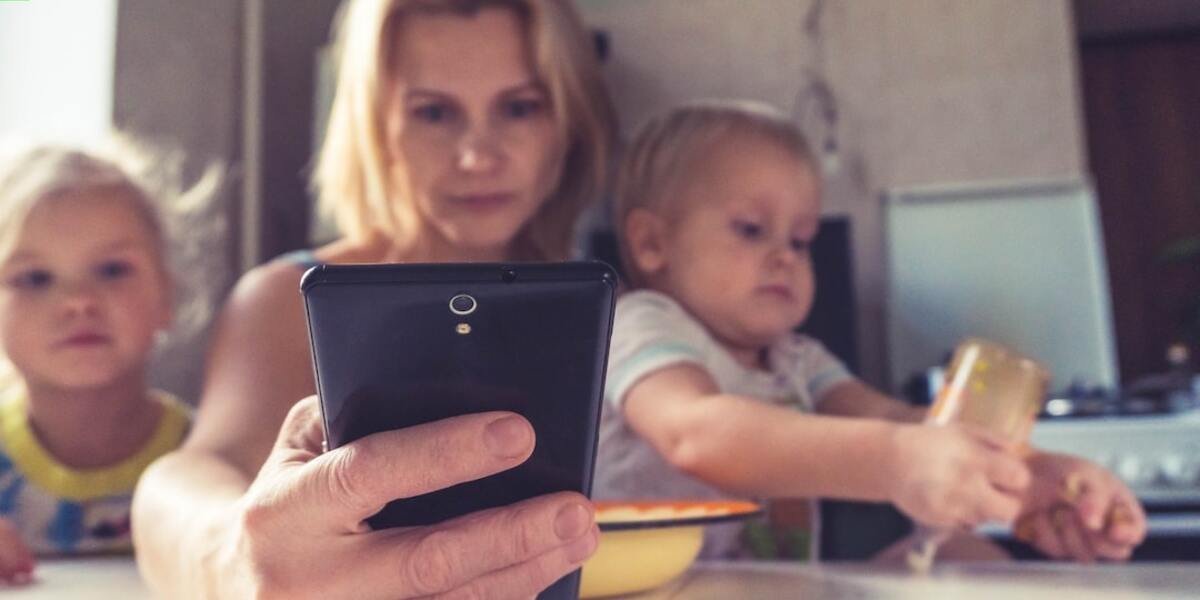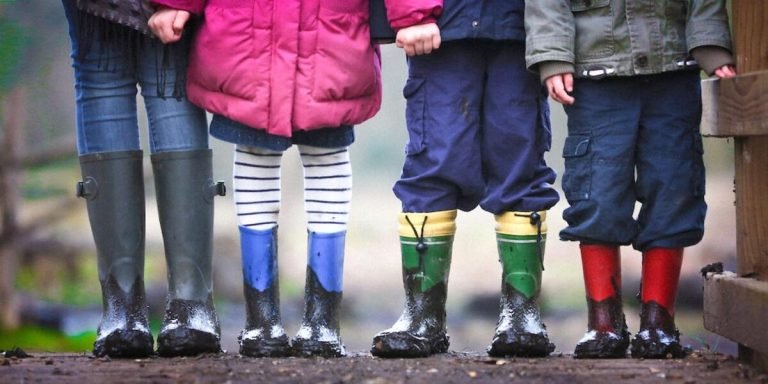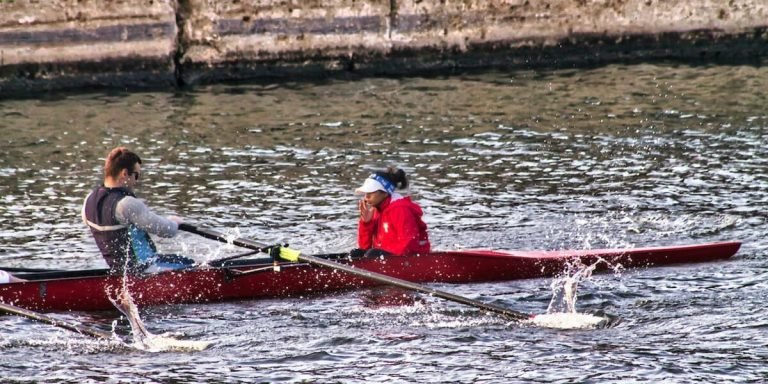Kinesthetic Learning Style and Its Impact on Childhood Education
As young learners engage with the world around them, they often display a strong preference for learning in one of several defined ways. The “kinesthetic learning style” is one such approach that prioritizes physical experiences and movement as primary conduits for absorbing new information. This hands-on method has seen a surge of interest among educators and parents alike due to its promise to transform how children grasp challenging concepts.
Delving into this kind of experiential or activity-based education can illuminate fresh perspectives on childhood development. It empowers youngsters not only to memorize facts but also connect with what they learn at an intrinsic level through direct engagement, thereby offering practical insights which traditional approaches may miss out on. In the realm of early education today, understanding kinesthetic learning’s impact thus becomes increasingly significant.
Did you know?
Kinesthetic learning, often overlooked in traditional classroom settings, actually accounts for around 5% of the population. These tactile learners absorb information best through physical activities like movement and touch.
Understanding Kinesthetic Learning Style: The Heart of Experiential Learning
In the current educational paradigm, understanding various learning styles like kinesthetic is no longer a luxury but an imperative. Kinesthetic learning style typifies learners who grasp knowledge best through experiences involving motion and action. This experiential mode of education forms the core essence of their cognitive development and academic progress.
With the advent of 2023, educators are increasingly recognizing that not all children learn in the same manner or pace. Some youngsters may respond well to visual stimuli while others blossom under auditory inputs; still then there are those who benefit most from kinesthetic processes – hands-on activities & physical participation. These ‘doers’, as they’re often called, understand concepts better when allowed to explore them via touch, movement and real-world experimentation.
The very heart of experiential learning thrives on this kinetic engagement with materials at hand. Whether it’s mastering math by measuring ingredients for cookies or comprehending gravity while playing seesaw in a park – activity-based lessons infuse abstract theories with tangible relevance that can be seen, felt & experienced firsthand by our young students especially when these principles sync perfectly with their inherent nature as kinesthetes.
Characteristics of Kinesthetic Learners in an Experiential Environment
Kinesthetic learning style, often overlooked in a traditional classroom setting, thrives in an experiential environment. As per the latest educational findings of 2023, let’s delve into understanding this distinct way of learning and how it shapes our children.
Firstly, kinesthetic learners are hands-on individuals. They learn best by doing things physically rather than reading or hearing about them. The experience comes first; theory later!
In their world-view each lesson is embodied as an action – be it solving math problems on paper to dramatizing a historical event.
Secondly, they exhibit high levels of energy which should not be mistaken for restlessness but acknowledged as their need for physical engagement with concepts being taught. This might involve movement while thinking like pacing around during problem-solving activities or using toys and props to demonstrate scientific principles better.
Thirdly, ‘sitting still’ may appear challenging for these students at times due to their natural inclination towards continuous motion while absorbing information; hence asking them to remain static could inadvertently hamper their focus on studies.
Moreover, kinesthetic learners typically possess strong motor memory & coordination skills allowing them excellent tools manipulation ability – such ease can greatly aid practical projects where assembling components or building models requires deftness and precision.
Importantly also is that most have a leaning towards professions involving considerable physical activity because jobs behind desks won’t provide enough stimulation for their active minds craving constant interaction between thought processes and bodily movements!
Tailoring Teaching Strategies to Enhance Kinesthetic Learning
Kinesthetic learning style, or tactile learning, stands out as one of the most practical and engaging methods for children to grasp educational concepts. It emphasizes “learning by doing,” providing learners with hands-on experiences that enable a deeper understanding.
The first step towards effectively tailoring teaching strategies is understanding what kinesthetic learning entails. Kinesthetic learners prefer touching, moving around and handling objects while acquiring knowledge – they lean more into physical exploration rather than passive absorption of information through listening or seeing only. Tailored instruction that acknowledges this preference can significantly boost these students’ engagement levels.
One effective strategy is incorporating active breaks within lessons; short intervals where students engage in mini-physical activities such as stretching exercises or quick games related to the topic being discussed can keep their minds alert and focused on the subject matter at hand instead of drifting off due to prolonged periods sitting still.
Another approach involves conducting field trips connected with classroom topics whenever possible: visiting museums, historical sites, science centers etc., allow kinesthetic learners immerse themselves fully in subjects they’re exploring enhancing stronger memory links through personal experience making them remember better long after books have been closed shut!
Activity-Based Learning Techniques for Kinesthetic Learners
Activity-based learning offers an ideal platform for kinesthetic learners to explore, engage and most importantly understand the concepts at hand. Unlike traditional lecture-oriented education models, activity-based learning favors active participation from students – thus catering perfectly to those with a kinesthetic style of grasping knowledge. These learners thrive by touching, moving and interacting physically with their educational environment.
With 2023 bringing more emphasis on inclusive classroom strategies, it’s time educators capitalize on this unique way of teaching.
Hands-on experiments in science classes and enacting plays in language lessons keep active minds engaged, ensuring effective absorption of vital information. Field trips that promote interactions outside the regular classroom can also provide thought-provoking experiences for children.
Research suggests that kids who learn through actions, rather than mere listening or reading, comprehend better. They understand the material more completely and often develop creative problem-solving skills – essential traits for our rapidly advancing society.
However implementing activity based learning does require some thoughtful planning by parents and teachers alike. It is important we don’t overwhelm them but gradually introduce activities that make complex subjects visually tangible and digestible bits so there’s ample room for practical application of their theoretical insights.Our goal should always be fostering curiosity , encouraging self-learning & ensuring they never lose enthusiasm.
Education has come along way since chalk-and-talk approach dominated our schools ; let’s continue embracing changes as beneficially radical as these!
Incorporating Movement into Everyday Lessons
Integrating motion into regular classes channels the vivid energy of children with a kinesthetic learning style. Kinesthetic learners are known for their preference to use body movement in understanding and absorbing new information. They thrive in environments where they can touch, move and explore.
Teachers or parents can guide these active learners by creating an experiential learning zone at home or school. Here’s how:
1. **Storytelling Through Actions:** Transform reading time into acting moments! Let your child step into the shoes of different characters from their favorite storybooks, retelling stories through actions instead of just words.
2. **Interactive Word Games**: Take vocabulary-building beyond traditional flashcards by incorporating word games that require physical activities like charades or Pictionary.
3. **Learning Math With Props**: Make math engaging using real-world objects such as fruits, toys etc., demonstrating addition/subtraction concepts with hands-on experience!
4.Science Demonstrations: Turn theoretical science lessons tangible via simple experiments which make abstract ideas more understandable.
5.Dance/Music Learning Sessions: Embed rhythm-based memory techniques relevant to various subjects amidst dance/music sessions.
6.Field Trips/Exploratory Visits: Organize visits outdoor gardens/museums/exhibitions/etc., facilitating direct exploration & discovery-learning experiences enriching the curriculum.
Rewards/challenges system – Foster competitive spirit subtly channelizing students’ focus appropriately towards tasks/goals.
Designing Hands-On Activities That Align with Curriculum Goals
In fostering an effective kinesthetic learning style, the crux of our attention lies in creating hands-on activities that sync well with curriculum goals. This ensures your child seamlessly develops academic skills while engaging passionately in physical acrobatics.
First, we need to understand what kinesthetic learners are. They are children who learn best by “doing”. Their cognition heightens when they physically participate in educational activities rather than just listening or reading about them.
For these students, experience is a prime teacher – this has garnered significant consideration within early childhood education paradigms of 2023 and beyond – steering us comfortably onto the realm of experiential learning or activity-based learning.
Next comes establishing solid connections between practical tasks and theoretical knowledge from their school’s syllabus. Say we’re trying to teach them about forces and motion involved within physics; you could use simple games involving push-pull mechanisms like tug-of-war or go-kart racing as compelling conduits for such lessons.
Projects where kids can create something tangible also align nicely with curriculum objectives: making a birdhouse while studying ecosystems; baking cookies during chemistry class explaining how heat makes dough rise etc., these facilitate immediate application of classroom teachings into real-world scenarios thereby enriching their understanding noticeably through direct experiences!
Role-play too finds immense credibility here! If it’s history on board- have your kid enact crucial historical events/figures- if it’s language teaching session – partake together in dramatic performances ensuring meaningful vocabulary expansion coupled alongside fine motor advantage!
Measuring the Impact of Experiential Education on Kinesthetic Students
Experiential education, also known as activity-based learning, has been increasingly recognized for its positive impact on students with a kinesthetic learning style. These learners thrive in an environment where they can use their physical bodies and senses to grasp new concepts. In the year 2023, there’s no better time than now to evaluate this pedagogical approach that shifts focus from theory to hands-on experiences.
The profound effects of experiential education can be seen both academically and emotionally among kinesthetic learners. By engaging them fully into activities related directly or indirectly to subjects like math, science or literature – we see not just improved comprehension but enhanced enthusiasm towards learning itself. Direct involvement pushes these kids out of passive consumption into active discovery mode creating a significant shift in knowledge retention rates.
However, measuring the actual impact requires critical analysis founded on well-researched methods such as observing behavioral changes over specified periods or conducting regular student self-assessment surveys post each activity session etc.. To conclude it is compellingly evident that Experiential Education indeed acts as a catalyst in amplifying the overall academic performance and emotional growth of Kinesthetic Students.
Assessing Academic Progress Through Practical Tasks
Experiential education plays a pivotal role in enhancing the academic journey of kinesthetic learners. This group of students, who favor ‘learning by doing’, often showcase their skills best when involved with tasks that cater to their kinesthetic learning style. Let’s delve into how we can assess these students’ progress through practical assignments.
Firstly, it is essential to define suitable benchmark activities for each student based on inherent abilities and learned competencies. Kinesthetic learning shouldn’t merely focus on physical activity but should also involve hands-on experiments or real-world simulations pertaining to the subject matter being taught. For example – building models in physics lessons or enacting scenes during language arts sessions are effective ways of engaging this category of learners.
Next step involves keen observation which forms an integral part of experiential education assessment criteria as well as evaluation process.Your child’s engagement level towards assigned tasks could be indicative not just about grasping theoretical concepts but its subsequent application too.Evaluators should note changes over time- any improvement in problem-solving capabilities? Is he/she able to connect abstract ideas cited inside classrooms within real world surroundings?
Evaluating Social and Emotional Growth in Active Learning Settings
Kinesthetic learners, known for their innate preference to learn through physical activities, can especially benefit from experiential education settings. Monitoring and understanding the social and emotional growth of students in such active learning situations is key.
When assessing the impact of activity-based learning on kinesthetic students’ advancement, it’s important first to understand what a “kinesthetic learning style” truly means. These are children who grasp concepts better when they physically experience or do something. Their academic progress may be more noticeable during lab work, field trips or role-plays than behind desks reading textbooks.
For educators aiming at creating an efficient environment for these kinetic kids, implementing strategies that allow them to move about becomes instrumental. In 2023’s educational landscape narrowed focus approach like this has gained substantial traction as it caters specifically toward enhancing individual student strengths while addressing unique challenges concurrently.
An effective way of evaluating social growth in these circumstances involves observing how well kinesthetic learners interact with fellow classmates during group activity sessions— noting if they encourage teamwork by sharing responsibilities equally; maintain positive communications even under stress scenarios; balancing leadership with followership roles effectively etcetera could present valuable insights into their development graph trajectory over time.
Emotionally too, kinesthetics’ reactions offer significant cues for evaluation: Are they excitedly participating? Do setbacks make them resilient or lead towards discouragement? How adept are they at managing conflict resolutions without involving teachers every single instance?
Conclusion
In the puzzle of childhood education, the kinesthetic learning style forms a critical piece. It presents an impressive avenue to engage children in active hands-on experiences that not only keep their minds stimulated but also makes learning an enjoyable process. So, if your child loves getting their hands dirty and understanding things by doing rather than seeing or listening, don’t forget – they might just be blossoming into successful kinesthetic learners.
Finally, remember – every child is unique with diverse educational needs which require patience and focused attention from both parents and educators alike. Our website offers a rich reserve of resources for educating children across all ages along with much-needed support specifically curated for you! Don’t hesitate to browse around; after all embracing effective strategies like the kinesthetic learning style could make monumental difference in how our little ones experience education.







